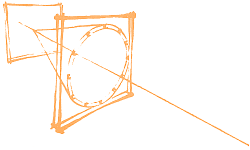Orateur
Dr
Jerry Vavra
(SLAC)
Description
The BaBar DIRC is an innovative internally reflecting Ring Imaging Cherenkov Counter. It uses quartz bar radiator of Cherenkov light and the pinhole focusing onto an imaging device made up of individual conventional PMTs. Its success in the BaBar physics analysis motivated us to propose this concept again for the SuperB application.
We plan to replace the BaBar stand-off box with a focusing optics (FBLOCK), which would be machined out the radiation hard solid piece Fused Silica. The major design constraints for the new camera are the following: (a) it has to be consistent with the existing BaBar bar box design; (b) it has to coexist with the BaBar magnet mechanical constraints; (c) it requires a very fine photon detector pixelization.
The imaging is provided by a mirror structure focused onto an image plane containing highly pixilated photomultiplier tubes. The reduced volume of the new camera and different material alone reduces the sensitivity to background by about one order of magnitude compared to BaBar DIRC. The very fast timing of the new tubes will provide many additional advantages – (a) improving the Cherenkov resolution performance, (b) measuring the chromatic dispersion term in the radiator, (c) allowing the separation of ambiguous solutions in the folded optical system; and (d) providing another order of magnitude improvement in background rejection headroom.
There are several important advantages of the new focused optical design made of solid Fused Silica: (a) the design is modular; (b) sensitivity to background, especially to neutrons, is significantly reduced; (c) the pinhole-size component of the angular resolution in the focusing plane can be removed, and timing can be used to measure the chromatic dispersion, improving performance; (d) the total number of MaPMT photon detectors is reduced by about one half compared to a non-focusing design with equivalent performance; (e) there is no risk of of water leaks.
| Please indicate "poster" or "plenary" session. Final decision will be made by session coordinators. | "plenary" |
|---|
Auteur
Dr
Jerry Vavra
(SLAC)
Co-auteurs
Blair Ratcliff
(SLAC)
Dr
Douglas Roberts
(University of Maryland)

